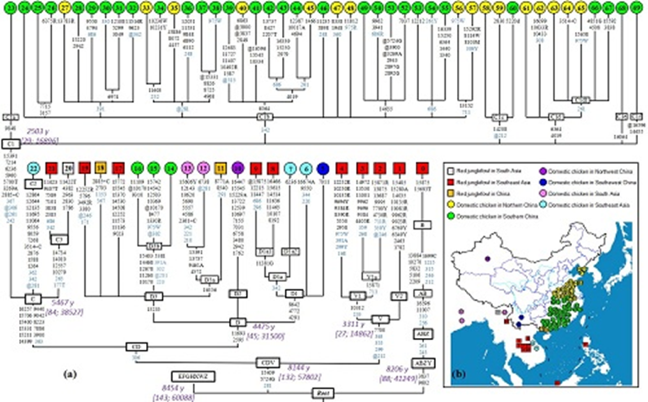The Research Made Progress About the History of Chicken Domestication in Northern China

Chicken domestication is an interesting topic, and attracts high interests among archaeologists and animal geneticists. Northern China is recognized as an agricultural homeland in East Asia. Several archaeological evidences highlight the possibilities of chicken domestication in ancient Northern China. In 2014, a research paper based on ancient mitochondrial DNA (mtDNA) entitled “Early Holocene chicken domestication in northern China” brought new perspectives on chicken domestication. However, it also raises various controversies, referring to the identification of “chicken remains”, the historical distribution of red junglefowls, and the data quality of ancient mtDNA sequences.
Further intriguingly, no genetic evidence from extant chickens corroborates the Northern China domestication hypothesis. This begs for answers as to whether dispersal, admixture, or anthropogenic replacements could completely blur the ancient footprints. To address this issue, researchers from Kunming Institute of Zoology, Chinese Academy of Sciences, Jiaying University, South China Agricultural University, Yunnan Agricultural University, et al. conducted a joint study about mtDNA variations in chicken populations. The initial analyses reveal that mtDNA sub-haplogroup C1 shows some characteristics that constitutea genetic signal of chicken domestication in northern China. The evidence from genetic diversity and archaeology indicates a recent expansion of sub-haplogroup C1 in Yellow-Huai River Basin of Northern China. This pattern is replicated in haplogroup A. Taking all these findings together, researchers propose that the dispersal of sub-haplogroup C1 and haplogroup A indicates a recent demographic event, which is probably related to gamefowl rather than early domestication of chicken. The analyses do not support the scenario ofearly Holocene chicken domestication in Northern China.
This study has been published online in Science Bulletin.
Source:Kuming Institute of Zoology
Time:2018.1.11
next:Scientists Find a “Thermostat” in Plant Immunity


